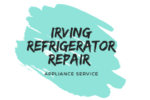This snippet has been extracted from “Remodeling on the money 15 Innovative projects Designed to add value to your home” by “Alan J. Heavens”. The key to refrigerator fast facts are that an evaporating liquid tends to draw away heat from its surroundings as it evaporates. “Appliance Repair in Irving TX,” provides you with interesting facts on this topic.
Determine how much refrigerator space will meet your needs. Consider the shapes and sizes of items you typically store and how your chilling/ freezing requirements stack up. Look not just at overall capacity, but also at how various bin and shelf options can help you store food efficiently.
When selecting a refrigerator, size does matter. It should be neither too large nor too small. You want one spacious enough for special occasions, of course, but modest enough that you’re not running an empty, energy- wasting box the rest of the time. Consider how well the capacity of your current refrigerator suits you, then scale up or down accordingly.

The typical refrigerator provides between 18 and 26 cubic feet of storage space. Models with top and bottom freezers typically have a capacity range of 10 to 22 cubic feet. For a family of four, 19 to 22 cubic feet is ideal. A very large side- by- side model could have a capacity as large as 26 cubic feet.
Freezer capacity can vary quite substantially from model to model. Think about what you store in there and plan accordingly. Prepackaged products (the boxes alone often eat up a lot of freezer space)? Bulk items? Bags of ice? Remember, too, that an ice-maker will need space of its own.
Capacity is not the only issue here. Before you, be sure to measure carefully the space you have for a new fridge. As houses have gotten bigger, appliances have gotten taller, wider, and deeper. Finding what you want in the size you want is sometimes a challenge, especially if you own an older house. Refrigerators need room to “breathe,” so don’t squeeze one into a tight spot. Make sure doors and drawers can open without obstruction.
Be sure to ask about energy efficiency. A refrigerator operates nonstop, and in a typical household accounts for 12 to 20 percent of total power used in one year. For this reason, an aging refrigerator is probably costing you money. Many models produced before 1999 don’t even meet current U.S. department of Energy power- usage guidelines. The latest refrigerators use 30 percent less electricity than models built 10 years ago because of better insulation and more efficient compressors and motors.
Once you calculate what fits your needs and what fits your space, you’ll have to choose from side- by- side , top- mount, bottom- mount, or compact/ under- counter models.
Residential- model side- by- sides range from $ 800 to $ 2,500; top freezes, $500 to $2,000.Bottom freezers run from $ 800 to $2,100; compact, $ 150 to $ 400.
Refrigerator shelves should be sturdy, flexible, and easy to clean. Glass is generally better. Adjustable shelves are a plus; some models have half- shelves that can be matched up for a wide, flat surface or adjusted separately for odd- height items. Look, too, for easy- to- reach temperature and humidity controls.
Fast facts on wall ovens
Wall height determines whether you can include a single or a double oven. Ovens come in widths of 24, 27, and 30 inches. The interior configuration of the oven is important because more rack positions available means more food can be cooked at one time. You want an oven that provides even baking and hides the baking element so that it won’t get caked with the splatter of spills.

Manufacturers say convection ovens now account for 30 percent of the market. These electric ovens use a fan in the rear to circulate hot air around the food. There are at least two baking elements that provide the heat; some models have a third element surrounding the fan. The even distribution of consistent heat means that food takes less time to cook. Many convection ovens have conventional bake and broil settings as well as convection options.
Speed ovens combine conventional, micro-wave, and convection to drastically cut cooking times. The microwave function is ideal for defrosting, reheating, and cooking a variety of food items or for just popping corn. The oven, with its convection mode and browning element, offers roasting and baking functions. The advantage is that you can cook either by microwave or convection or combine the two methods.
Self- cleaning ovens heat up to intensely high temperatures, turning spills in the oven into a fine powder that can be wiped away. The oven securely latches during the cleaning, which can take hours.

